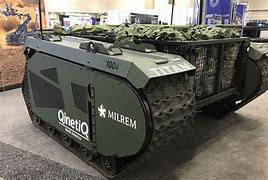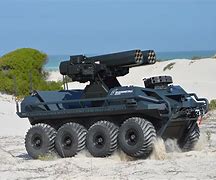
Japan is making significant strides in bolstering its unmanned ground capabilities with the recent acquisition of advanced unmanned ground vehicles (UGVs), signaling a major shift in its military strategy.

In a move to keep pace with its neighbors and address demographic challenges, Japan has turned to international suppliers to provide cutting-edge robots to support its ground troops.

On April 8, the announcement of a multimillion-dollar deal between Japan and Rheinmetall for three Mission Master SP 8×8 UGVs was a clear demonstration of Japan’s commitment to modernizing its defense forces.

Following close behind, an agreement with Estonia-based Milrem for three THeMIS-tracked UGVs was revealed on April 16, further solidifying this new direction in Japanese defense policy.

Additionally, the Japan Ground Self-Defense Force (JGSDF) plans to acquire three Vision 60 quadrupeds from US-based Ghost Robotics in the next fiscal year.

Japan’s approach to UGV adoption is driven by an aging and shrinking population, which has reduced the pool of potential military recruits.

The Japanese military-acquisition agency ATLA recognized the necessity to “promote efforts for automation, labor saving, and optimization through utilizing unmanned assets.”

A budget of approximately six billion yen – about US$38 million – has been allocated in the FY2023 budget specifically for small UGVs, showcasing the significance of this initiative.

These newly acquired UGVs will serve various operational roles, including garrison security, information gathering, and combat support.

Notably, the ATLA spokesperson highlighted, “The Defense Buildup Program calls for the effective combination of UGVs and unmanned aerial vehicles to improve the efficiency of security and protection systems of garrisons, bases, and other critical facilities.”

The decision to procure UGVs from foreign companies is attributed to performance requirements, cost considerations, and maintenance factors.

According to the ATLA spokesperson, there is no current policy restricting acquisitions to either Japanese-made or foreign-made UGVs exclusively.

The Themis robots from Milrem are slated to be configured for supply transportation and intelligence gathering. Milrem’s CEO Kuldar Väärsi emphasized that “The goal of the Ground Self-Defense Force is to fundamentally strengthen its defense capabilities with unmanned assets in order to gain asymmetric superiority while limiting human losses.”

Meanwhile, Rheinmetall’s electric-powered Mission Masters will be equipped with varied payload modules, including cargo, surveillance, and a remote-controlled weapon station, augmenting the capabilities of Japan’s ground forces.

The Japan Air Self-Defense Force has already experienced the benefits of such technology with the use of Vision 60-legged robots at Hyakuri Air Base, which played a supportive role in rescue efforts following the Noto earthquake in January.
Relevant articles:
– Japan hastens pursuit of unmanned ground vehicles for its military, Defense News
– US Air Force issues $90M contract for counter-drone systems and support, C4ISRNet
– Anduril, Hanwha team up to bid for Army’s light payload robot, C4ISRNet
– Japan’s SDF To Evaluate Mission Master Unmanned Ground Vehicles, Armada International
